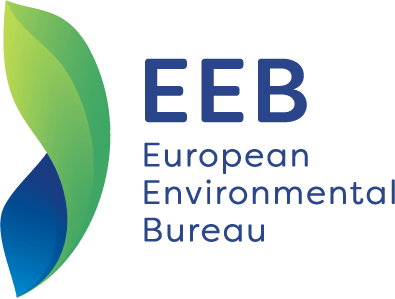Ample land for sustainable renewables expansion in Europe, new study reveals
A new analysis by the European Environmental Bureau (EEB) reveals that Europe has sufficient land to expand solar and wind energy without compromising food production or nature. The study shows that only half of the land deemed suitable for renewable energy—excluding natural reserves and high-value agricultural areas—is needed to decarbonise the EU by 2040.
As debates intensify over where to place new solar and wind projects, the EEB’s study clarifies the spatial requirements for achieving 100% renewable energy in Europe sustainably.
Key Findings:
-
Minimal land needed: Only 2.2% of the EU’s total land will be required for current and future solar and wind projects to allow the EU to phase out both fossil fuels and nuclear power and reach climate neutrality by 2040.
-
Sufficient suitable land: According to the Joint Research Centre (JRC), 5.2% of EU land can be considered ‘suitable’ for solar and wind development, based on strict agricultural, environmental and technical criteria for hosting onshore wind and solar projects.
-
Rural areas lead the way: The majority of suitable land for sustainable renewable deployment is in rural areas, with 78% for ground-mounted solar PV and 83% for onshore wind.
-
Rooftops not enough: Urban and industrial areas alone can’t meet all solar capacity needs. However, there is plenty of degraded agricultural land available to expand solar energy without disrupting rural economies. This can be done in synergy with food production and soil health restoration.
-
Coexistence possible: Beyond degraded lands, renewables can coexist with agriculture and nature. Integrating solar power with existing agricultural activities is possible through dual-use standards like agri-PV. With robust mitigation measures, EU countries can meet both renewable energy and nature restoration goals—requiring 16.7% of land beyond current protected areas—while ensuring synergy between the two.
- Solidarity and interconnection: Germany and Italy lack enough suitable land for renewables if natural reserves and productive agricultural areas are excluded. In contrast, Spain and Romania have an abundance, well above their energy needs. A European “supergrid” is essential to connect resources, balance energy distribution, and achieve EU-wide decarbonisation through cooperation and reduced waste.

Read the full report here.
Quote
Cosimo Tansini, Policy Officer for Renewables at the European Environmental Bureau, said:
“Renewable energies can thrive without harming food supplies or natural habitats. Evidence suggests that Europe has ample land for a sustainable expansion of renewables, excluding biodiversity-rich zones and productive agricultural lands, particularly in rural regions. By adopting participatory processes and robust mitigation measures to minimise environmental impacts, we can use renewable energy to restore land, benefit communities, and support rural economies.”
Background information
The new EU Renewable Energy Directive (RED) mandates member states to designate ‘acceleration areas’ for renewable energy projects, where approval processes will be streamlined, potentially bypassing some existing environmental legal requirements. This has raised concerns about potential conflicts due to land use changes or failure to coexist with nature conservation and community needs. The report clarifies that biodiversity-rich zones and productive agricultural land need not be compromised to achieve 100% renewables in Europe.
Strategic spatial planning, high environmental standards and local community involvement are essential for a nature-positive and inclusive renewable energy transition. By addressing the challenges and opportunities of renewable energy integration in rural areas, the EU can achieve its climate targets while driving rural development and resilience. The EEB calls for continued support from policymakers, investment in infrastructure, and active engagement with local communities to lead the way in creating a sustainable and equitable energy future.
Methodology
The report builds on the preliminary territorial analysis by the EU’s Joint Research Centre (JRC), which identified suitable land for renewable energy projects by excluding protected natural areas and high-value agricultural land. Instead, it focused on built-up areas and degraded land with limited agricultural prospects. Areas deemed suitable exclude Natura 2000 sites, key biodiversity and bird areas, and high-value natural farms. Only arable land and mixed crops and livestock systems with advanced erosion, low productivity, and high abandonment risk were selected as suitable.
The JRC criteria are not prescriptive but provide a measure of available land for solar and wind projects, harmonising with agriculture and biodiversity protection.
Building on the JRC’s analysis, we assessed current land use and cover types based on available datasets and EU documents, estimating the surface needed to host enough renewable energy capacity to meet the Paris Agreement Compatible (PAC) scenario goals: 100% renewable energy across all sectors, around 50% energy demand reduction, and climate neutrality by 2040. We calculated space requirements for onshore wind and solar photovoltaic (PV) technologies, providing a breakdown between rooftop and ground-mounted PV systems, based on their foreseen installed capacity and values from the literature. Our estimates also include the space requirements of the current and future grid, as elaborated by the Renewables Grid Initiative and Reiner Lemonier Institute in their report “Energy and Space”.
ENDS

